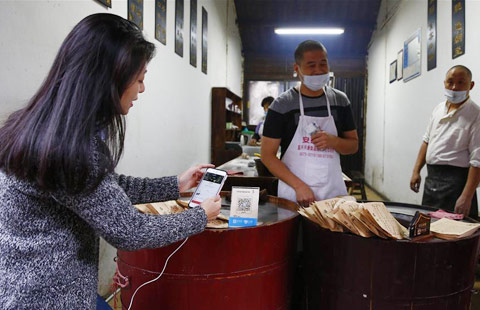Minmetals unit offers sponge city solutions for rainfall usage
WISDRI Engineering and Research Incorporation Ltd, a subsidiary of China Minmetals Corp, the country's biggest metals trader by revenue, said it will provide so-called sponge city solutions-the technology being rolled out in China to counter flooding-to more than 10 major cities including Nanning, Chongqing and Jinan in 2017.
As urbanization develops fast, the sponge city as an urban design concept has quickly gained attention from the public. Such a city is able to absorb, store for later use and recycle up to 70 percent of rainfall, effectively filtering out pollutants from rainwater and cutting the rainfall runoff that directly flows into drainage systems.
In 2014, there was flooding in 125 cities in China and it is believed that the rapid urbanization has made cities more vulnerable, so in late 2015, the government launched its sponge city program. The initiative integrates torrential rainfall into the urban water cycle, rather than letting it run away, as with the old approach to drainage techniques.
Zhou Qiguo, WISDRI's deputy general manager, said many cities are now confronting an awkward situation.
When it is rainy, the cities are troubled by waterlogging, because their drainage systems are overwhelmed. When the flood water recedes, they quickly fall into drought conditions.
The company said it is now in talks with a number of cities in Hubei, Hunan, Sichuan and Jiangxi provinces, because building a sponge city is a systematic project and needs to be approached by combining man-made measures with the natural environment.
"The development of a sponge city can not only improve a city's infrastructure facilities, but also protect its residents' property," Zhou said. "Improvements can quickly be found in air circulation, soil, vegetation and humidity."
More than 67 percent of 400 cities on the mainland suffered some sort of flooding since 2010 and a total of 148 cities experienced flooding more than twice, according to a survey in June, conducted by the Beijing-based Chinese Academy of Science and Technology for Development.
Eager to reduce the impact caused by insufficient drainage capacity in many cities, especially in the southern parts of the country, the Ministry of Housing and Urban-Rural Development also promulgated guidelines on the development of sponge cities in 2014.
Shortly after 16 cities-including Xiamen, Zhenjiang and Changde-were designated as the first batch of sponge cities in a pilot program featuring natural storage, natural permeation and natural purification.
In April, the program was extended to include 14 more cities.
"The concept of a sponge city should be further integrated into urban planning, assessment, design and construction, rather than being talked about separately," said He Jingtong, a professor of urban planning at Nankai University in Tianjin.
"It is hard to transform a traditional city into a sponge one within a short period," He added.























